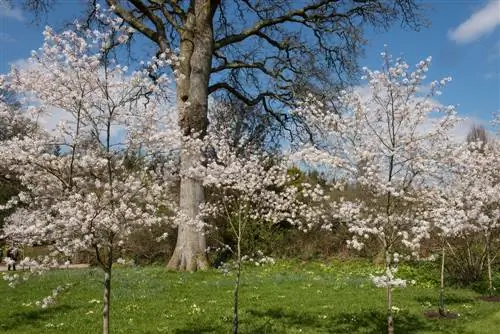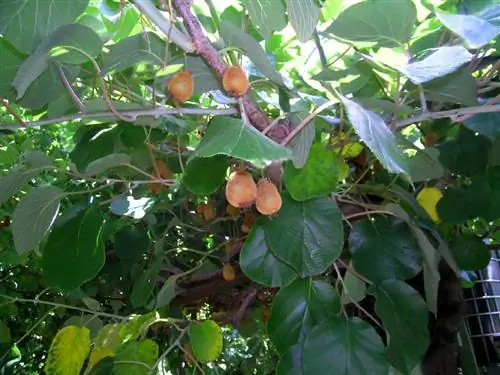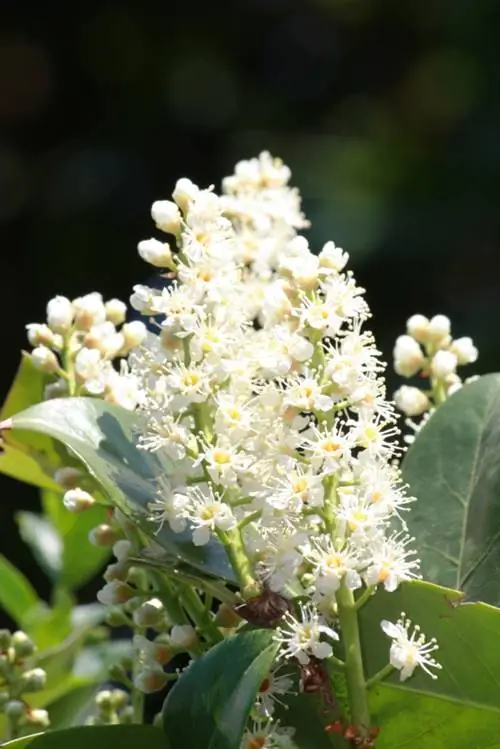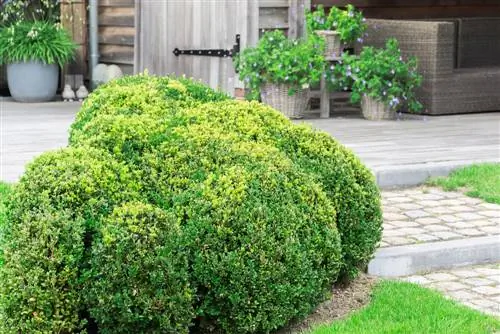- Author admin [email protected].
- Public 2023-12-16 16:46.
- Last modified 2025-01-23 11:21.
While hedge plants such as Thuja occidentalis or the hornbeam can “forgive” almost any type of pruning relatively quickly, the so-called “caretaker pruning” in the sense of simply “heading” the plants should be taboo for any serviceberry variety. Of course, there are still ways to influence the maximum height of a rock pear.

What height does the rock pear reach and how can you limit its growth?
The maximum height of a rock pear varies depending on the variety: copper rock pear reaches 2-6 meters, common rock pear 1-4 meters and alder-leaved rock pear 2-4 meters. To limit the height, we recommend specifically cutting off individual shoots or cultivating them in a bucket.
Select the right variety for a location
Rock pears are not as easy to “train” as many other plant varieties. Therefore, the selection of a specific plant variety should, if possible, influence the maximum height a rock pear can reach in a well-suited location under ideal conditions. After a few years at the chosen location, the size of course also depends on factors such as the climate, soil conditions or fertilization. The following information on some varieties of rock pear is intended to provide a rough overview of the size range of the different rock pear varieties:
- Copper rock pear: approx. two to six meters maximum height
- Common rock pear: approx. one to four meters maximum height
- Alder-leaved rock pear: approx. two to four meters maximum height
These values are only average values - in particularly suitable locations, specimens of the copper rock pear can sometimes reach maximum heights of up to ten meters.
Only use cuts very specifically to limit growth
Older specimens of the rock pear can react very sensitively to massive pruning. Therefore, all cuts should either be made very carefully and thoughtfully or only be carried out as part of the so-called pruning process. If a rock pear becomes too dense, you can cut off individual shoots of the usually multi-stemmed plant close to the ground in late winter. Sometimes it can be sufficient to cultivate the rock pear in a bucket to limit its height growth.
Low serviceberries make harvesting easier
The edible fruits of the serviceberry sometimes ripen at a slightly different time, which requires repeated harvesting. Anyone who owns relatively low rock pears can count themselves lucky. It also pays off when protecting against bird damage if the rock pear develops a rather low habitus.
Tip
When planting a serviceberry as a privacy screen on a property boundary, you should take into account the respective regulations at state and municipal level regarding the minimum distances of plants of a certain height from the border of the neighboring property.






